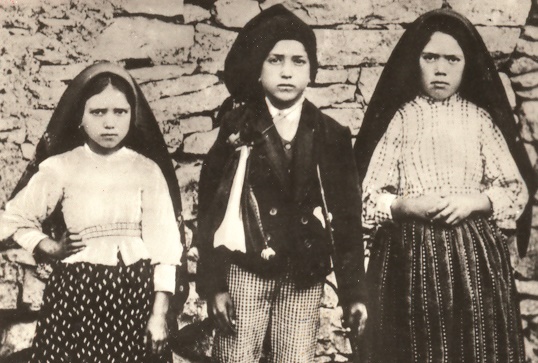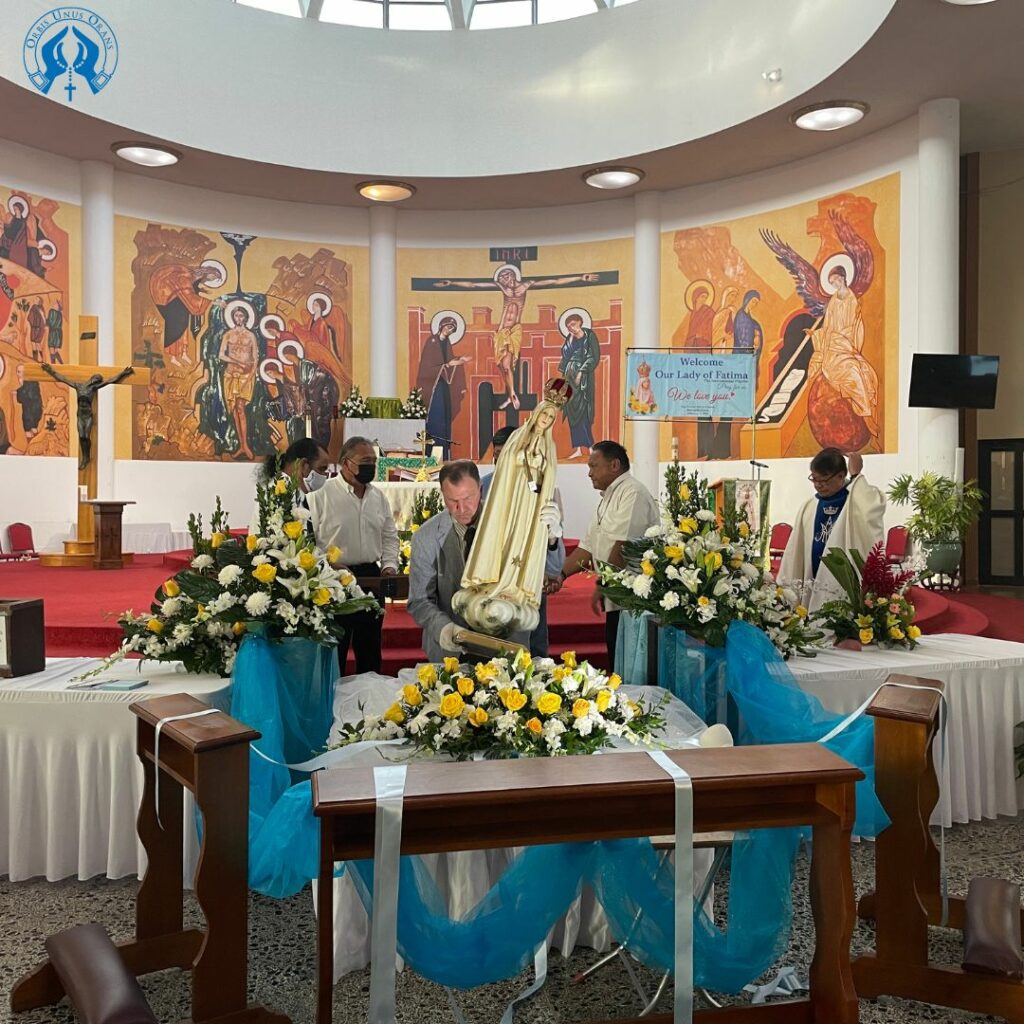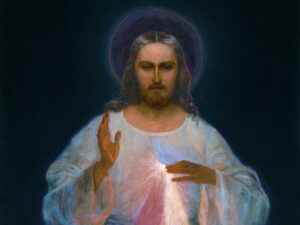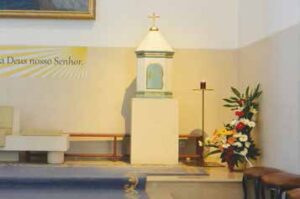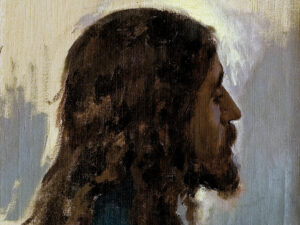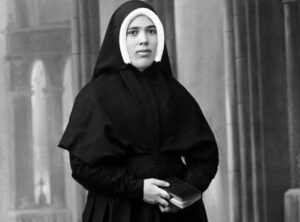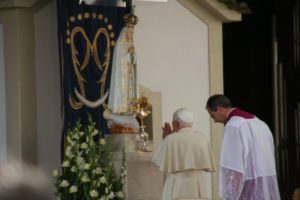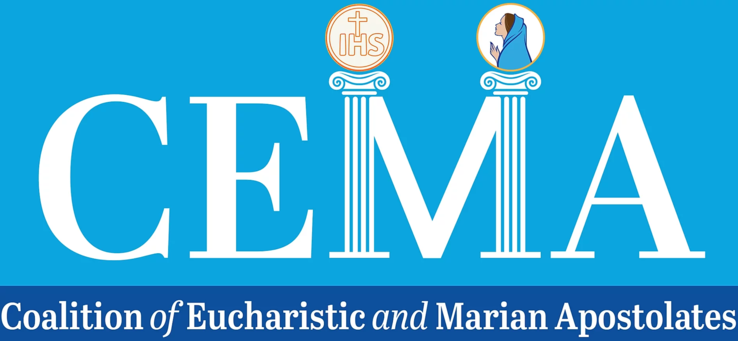

by Joseph Pronechen –
Fatima and Lourdes are the most recognizable names when it comes to approved apparitions of the Blessed Virgin Mary. But few outside Poland have heard of the approved Gietrzwald Apparitions that raise the question: Did it act as a heavenly bridge between Lourdes and Fatima?
At Lourdes in 1858, Our Blessed Mother appeared to one person, St. Bernadette. At Gietrzwald in 1877, 40 years before Fatima, she visited two young girls. At Fatima in 1917, Our Lady appeared to three young children. Of course, this progression is not as important as the messages and instructions Our Blessed Mother gave and reinforced for her children — then and now.
Gietrzwald is in the district of Warmia in northern Poland, which at the time of the apparitions was annexed to the German Empire and under Prussian control. Warmia was surrounded by Prussian Lutherans, but most everyone in Warmia was Catholic and spoke Polish. The small town’s church served as the parish for eight villages in the surrounding countryside.
Our Lady was already honored in Gietrzwald. Its Church of the Nativity of the Blessed Virgin Mary had a miraculous image of her and was celebrating its patronal feast on her birthday of September 8 at least by 1500. By 1505, her image was already revered as miraculous. She holds the Child Jesus, and angels around her display the inscription Ave Regina Coelorum, Ave Domina Angelorum(Hail Queen of Heaven, Hail Lady of Angels).
Then came 1877. Our Lady of Gietrzwald appeared outside the church, first to 13-year-old Justyna Szafryńska. Days later, she appeared to 12-year-old Barbara Samulowska. Both were from poor Polish families.
Justyna’s situation echoed that of St. Bernadette, who at 14 was trying to learn the catechism to prepare for first Communion. At 13, Justyna also had some difficulty preparing for first confession and Communion. Then on June 27, at church with her mother, she passed the exam given by the pastor.

Leaving the church that early evening, she was drawn to the 20-foot tall maple tree by the rectory, where she saw a “white-clad figure, with long hair falling over her shoulders and sitting on a golden throne decorated with pearls. Then she noticed a bright glow coming down from heaven and an angel with golden wings in a white robe” who bowed to the woman on the throne. At Lourdes, Our Lady wore a white dress and at Fatima she was dressed in white, shining brighter than the sun. During this first apparition the Blessed Virgin Mary didn’t speak to Justyna.
Justyna told everything to Father Augustyn Weichsel, the pastor. The next day Mary appeared with the Child Jesus who sat on her knee and held a globe.
The appearances of the Blessed Mother would continue daily from June 27 through September 16. Our Lady appeared in Gietrzwald by the maple tree. In Fatima, above a holm oak tree.
Barbara Samulowska saw the Blessed Virgin the first time on June 30, the day Mary began appearing alone and sitting on a throne. She would appear this way every evening as the Rosary was being prayed in the church. The pastor told young Barbara to inquire of the Blessed Mother: “What do you ask Mother of God?”
Her reply — the first message of the Blessed Mother — was: “I wish you to pray the Rosary every day.”
This message reflects the first visit of Mary at Fatima, who told the children, “Say the Rosary every day, to bring peace to the world and an end to the war.”
Learning of the apparitions, the people responded at once. There didn’t seem to be the skepticism that at first marked other apparitions. There was a rebirth of spirituality and also a strengthening in believers as people gathered at church to say the Rosary and prayed it in nearly all the homes and surrounding villages. In one village, people prayed the Rosary in church three times daily. Quickly there followed “numerous conversions and frequent reception of the sacraments.”
By the apparition on July 1, Justyna asked, “Who are you?”
She heard this answer, “I am the Blessed Virgin Mary of the Immaculate Conception.”
Justyna’s and Barbara’s daily apparitions always took place during the evening’s Rosary, usually beginning at the second mystery and finishing during the fourth mystery or beginning of the fifth.


On July 3, Mary told the girls the sick will be healed and there would be a miracle. Similarly, at Fatima, Mary announced a forthcoming miracle and the sick would be healed. The pastor asked the girls to see what the sick should do to be healed. Our Blessed Mother answered them,“They should pray the Rosary.”
People listened. Near the end of July people were praying the Rosary in the church three times a day — Joyful Mysteries in the morning, Sorrowful later on and Glorious in the evening.
The children also got some specific answers. When Justyna asked if a particular person should go to the monastery, Our Lady replied that it’s good for as many as can to go to the monastery.
When the pastor told the children to ask why so many people were swearing falsely, Our Blessed Mother answered, “This is not worthy to enter heaven; it is the instigation of the devil.”
Others, such as the drunks, would be punished, too, if they didn’t amend their ways.
Another time, Our Blessed Mother told the children “Everyone should listen to the priests.” And priests should “earnestly pray to the Virgin Mary, then she will always be with them.”
Because of the difficult suppressions during this time of Prussian occupation and rule, the children asked if persecutions would stop and if the “orphaned” parishes would receive priests. These same elements of a strong secular government and society operated in France and Portugal during apparitions at Lourdes and Fatima.
Mary told them, “If people will earnestly pray, then the Church will not be persecuted, and the orphaned parishes will receive the priests.” Fervent prayer was the key. When the girls asked for her blessing, she told them, “I always bless you.”
On September 8, the feast of the Blessed Mother’s birthday, through her intercession, the spring, where for decades pilgrims coming to venerate the miraculous picture of Our Lady in the church had gotten their water, began to relieve people’s sufferings and bring healing to them.
On September 16, thousands of pilgrims joined in the ceremonies for the consecration and enthronement of a new statue of the Immaculate Virgin Mary. They joined in the procession while carrying the statue around the church. The rain that day was described as torrential, but, as in Fatima, it stopped at the time of the procession. Everyone sang and prayed the Rosary.
Over the years, many conversions continued, and in the initial days during the apparitions confessions began in early morning and continued to 10 p.m. Sinners repented, as Our Lady later asked at Fatima.
The Blessed Mother, in this last apparition, made her final words reflect her opening words: “Pray the Rosary fervently.”
It took some years for Fatima — where in her last apparition Mary said, “I want you to continue saying the Rosary every day” — to be officially recognized. The same for Gietrzwald.
Finally on Sept. 11, 1977, the Bishop of Warmia approved of Our Lady’s apparitions. The Archbishop of Krakow, Cardinal Karol Wojtyła, was present during this canonical recognition of these century-old apparitions. As St. John Paul II, he sent a letter to the shrine on its 125th anniversary in 2002 thanking Mary for her presence and maternal protection.
Of course, we know St. John Paul II was especially close to Our Lady of Fatima and the Rosary. Like Lucia, Barbara became a nun. Although there are differences with Lourdes and Fatima, Gietrzwald’s similarities make it seem like a bridge between them. The span links some clear and precise instructions from our Mother, especially conversion, praying for sinners and praying the Rosary every day — “I want you to continue saying the Rosary every day.”
That’s a bridge she wants the world to cross with her.
This article appeared in the Fall 2019 issue of SOUL magazine.


